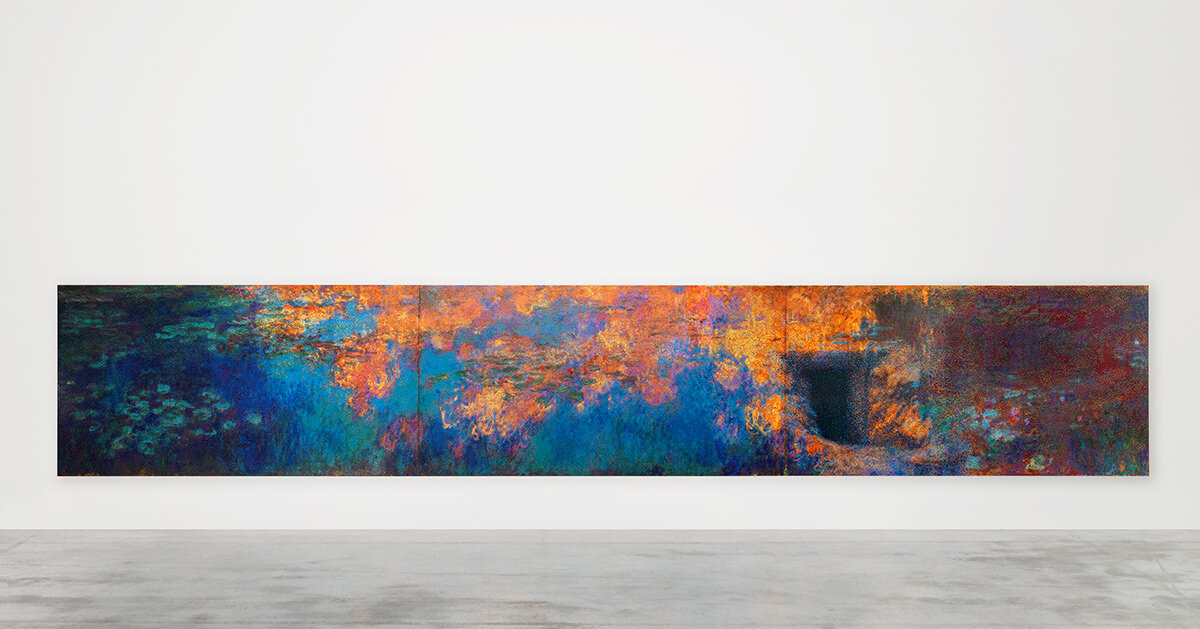Ai Weiwei Recreates Claude Monet's Water Lilies with 650,000 LEGO Bricks at Design Museum Exhibition
Core Concepts
Ai Weiwei challenges traditional art forms by recreating Claude Monet's masterpiece using LEGO bricks, inviting viewers to reconsider reality and beauty through a modern lens.
Abstract
Ai Weiwei's exhibition at the Design Museum features his largest LEGO creation to date, a 15-meter long piece titled Water Lilies #1 made of 650,000 LEGO pieces. The artwork challenges perceptions by replacing Monet's brushstrokes with industrial parts and colors, symbolizing contemporary digital technologies. Additionally, Ai Weiwei presents another major LEGO artwork alongside Water Lilies #1, highlighting the artist's unique approach to design and architecture.
Customize Summary
Rewrite with AI
Generate Citations
Translate Source
To Another Language
Generate MindMap
from source content
Visit Source
www.designboom.com
ai weiwei recreates claude monet’s water lilies using 650,000 LEGO bricks
Stats
The exhibition features a piece made entirely out of 650,000 LEGO pieces.
Water Lilies #1 is over 15 meters long.
Untitled (Lego Incident) is part of a series of five expansive 'fields' with hundreds of thousands of objects laid out on the gallery floor.
Quotes
"By recreating this famous scene, Ai Weiwei challenges our ideas of reality and beauty."
"These pixel-like blocks suggest contemporary digital technologies which are central to modern life."
Key Insights Distilled From
by Matthew Burg... at www.designboom.com 03-21-2023
https://www.designboom.com/art/ai-weiwei-making-sense-claude-monet-water-lilies-lego-exhibition-03-21-2023/
Deeper Inquiries
How does Ai Weiwei's use of LEGO bricks challenge traditional artistic mediums?
Ai Weiwei's use of LEGO bricks challenges traditional artistic mediums by subverting the conventional materials and techniques used in art creation. By creating intricate and large-scale artworks such as "Water Lilies #1" entirely out of 650,000 LEGO pieces, Weiwei blurs the lines between high art and popular culture. The choice of using LEGO bricks, typically associated with children's toys or building blocks, transforms a familiar medium into a tool for profound artistic expression. This unconventional approach challenges the notion that only certain materials or methods can be considered legitimate in the art world, opening up new possibilities for creativity and interpretation.
What impact does Ai Weiwei aim to achieve by incorporating personal history into his artworks?
Incorporating personal history into his artworks allows Ai Weiwei to infuse deeper layers of meaning and emotion into his creations. By referencing significant events from his own life, such as depicting the underground dugout in Xinjiang province where he lived in forced exile with his father during the 1960s, Weiwei adds a personal touch that resonates on both an individual and universal level. Through this incorporation of personal history, he aims to evoke empathy, provoke reflection on shared human experiences like displacement or oppression, and highlight social injustices that have shaped his identity as an artist and activist. By intertwining personal narratives with broader themes in his artwork, Ai Weiwei creates connections between past traumas and present realities.
How can the tensions explored in Ai Weiwei's career artworks be interpreted in today's society?
The tensions explored in Ai Weiwei's career artworks offer poignant reflections on contemporary societal issues such as globalization, consumerism, political dissent, cultural heritage preservation, and human rights violations. For instance,
his juxtaposition of ancient artifacts like Han dynasty urns with modern symbols like Coca-Cola logos symbolizes clashes between tradition
and commercialization.
These tensions resonate strongly today amidst ongoing debates about cultural appropriation,
environmental sustainability,
and power dynamics within societies.
By highlighting these contradictions through visual representations,
Weiwei prompts viewers to question their own beliefs
and values regarding these complex topics
in today’s rapidly changing world.
Through his provocative works,
he encourages dialogue
and critical thinking about pressing issues facing society at large.
0
